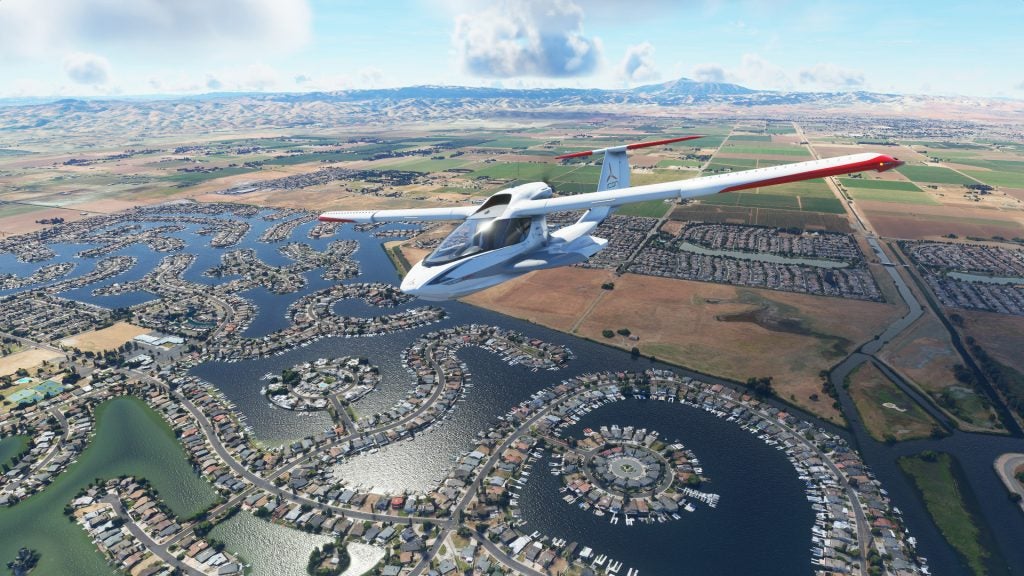Level Up: Could Microsoft Flight Simulator tease the future of gaming visuals?

Cloud technology has been touted as a major component in the future of gaming for years now, but beyond a few exceptions, the proof has seldom been found in the digital pudding.
Microsoft’s Crackdown 3 boasted unparalleled destruction thanks to the cloud, but in the end this was a glorified demonstration ahead of release and nothing more. Streaming services such as Project xCloud and Google Stadia are also yet to penetrate the mainstream, despite the potential such things present to the medium.
But now, something has finally stepped forward and shown how cloud streaming technology can be positively transformative to the gaming experience. Microsoft Flight Simulator makes use of Azure technology and real-life map data to stream accurate representations of real locations, weather and elements as you play. It’s stunning, and unlike anything we’ve ever seen before.
Related: Best PC Games

There’s a sense of majesty to Microsoft Flight Simulator that is genuinely unparalleled. Departing from one of the game’s airports and simply losing yourself in a random direction is a mysterious delight, especially when the entire globe is rendered before you with little in the way of restrictions. In a time where we’re asked to remain indoors, it’s an opportunity to explore the outside world without compromise.
With the right hardware and cloud streaming behind it, this experience becomes almost euphoric, daring you to seek out locations both familiar to you in reality and those you’d only dreamed of visiting in the real world. Now, there is nothing stopping you, and Asobo Studios should be applauded for what has been accomplished with Flight Simulator. Perhaps more exciting, is how Azure Technology could be used in games moving forward.
PS5 and Xbox Series X have spent months talking about the benefits that high-speed SSDs will bring to the average consumer, making loading times a thing of the past while allowing the worlds we explore to feel more seamless and experimental. Beyond Ratchet and Clank: A Rift Apart, we’ve yet to see such lofty claims in the flesh, but knowing they’re on the horizon is incredibly exciting.
It’s worth noting that Microsoft Flight Simulator is a very demanding game. Even on an RTX 2080Ti and a half decent CPU I sometimes struggled to hit a steady level of performance on the highest settings, and that’s with all the cloud features enabled to boot. The millions who have already dove in are likely in awe of its status as a resource hog, likely because Flight Simulator is anything but linear.
Related: 13 Sentinels – Aegis Rim Preview

But this begs the question, what could curated, linear narrative experiences making use of such visual techniques be capable of? Open-world adventures inspired by real-life locales could use architectures and environments in a lifelike manner we’ve never seen before, while more adventurous outings could approach it in different ways.
I’m no game developer, and Microsoft Flight Simulator could always be a lightning in a bottle situation, but the graphical heights it is capable of shouldn’t be undersold. I was able to visit my childhood home and the town that surrounds it and vividly identify landmarks around it from the air, revelling in nostalgia on a journey that would take me from the humble streets of Cardiff to the towering skyscrapers of Tokyo.
With the dawn of new consoles and streaming services, I hope such ambitious experiences become more commonplace, or simulators such as this are widely accepted as something more than just hobbyist titles for the most hardcore of aviation fans. Being able to jump into something like this with nothing more than a controller and a data connection breaks down so many barriers, and provides developers with the knowledge that they can reach a much wider audience.


